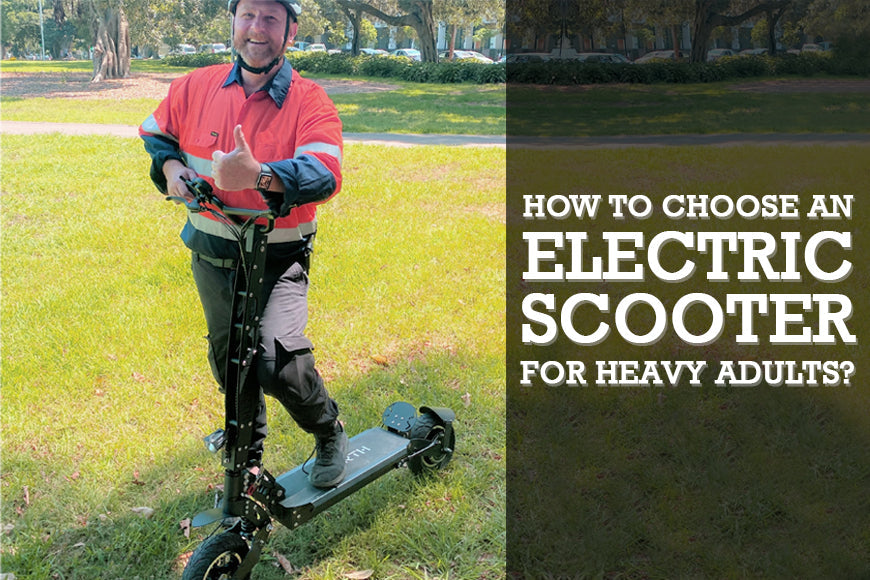
If you are currently looking for the right electric scooter, consider the motor power or the type of motor you want to get before you make an electric scooter purchase online. An electric scooter motor is one of the main parts of an e-scooter, and it helps you go to places faster and easier along with the electric scooter battery.
High-performance electric scooters for adults use large motors with powerful engines producing over 1000W of power. If you need an electric scooter that can take you through uneven paths and off-road terrains, consider getting a powerful electric scooter motor. Learn more about e-scooter motors to help you choose the right e-scooter.
What is an Electric Scooter Motor?
Think of the motor as the e-scooter’s powerplant. It means it determines and generates the power your e-scooter will use while riding. It will also determine the acceleration, max speed, hill-climbing ability, overall performance, and power consumption of your e-scooter. Most commuter e-scooters include one motor, but high-performance or off-road e-scooters usually use dual motors for extra power.
Types of Electric Scooter Motors
- Brushless DC Motor
A brushless DC motor, also called BLDC motor or electronically commutated (EC) motor, uses new technology to produce an efficient and durable motor with a better power-to-weight ratio.
Thanks to its efficiency, it also runs quieter and is more resistant to overheating. Premium electric scooters, like the Mearth RS Series, use a BLDC motor for quality performance.
- Brushed DC Motor
A brushed DC motor is an older motor technology that uses mechanical brushes to power different coil phases. Despite its old method, many still support brushed motors as they are reliable, robust, and affordable. Plus, many riders claim that it makes hill climbing easier.
However, this type of motor also includes downsides, such as the brushes wearing down over time and the motor producing more noise. When the brushes wear down, it can cause a malfunction to the voltage, making it hazardous for the rider.
How Does an Electric Scooter Motor Work?
Electric scooter motors work depending on the type of motor your e-scooter uses. However, it generally starts with the controller. When you use the throttle on the handlebar, the electric scooter controller lets the motor know it should start running. Moreover, it helps regulate the amount of power the motor produces, depending on how you control the throttle.
For example, if you need to go uphill, you will need to max out your throttle input and set the power mode to the highest level. It will prepare your e-scooter to produce the max amount of power to take on inclines and rougher roads. Then, the motor draws the battery’s energy to generate the needed energy to move.
Electric Scooter Motor Specs
How do you know if an electric scooter motor provides enough power and good performance? Look at the electric scooter motor specifications. Manufacturers often list down the rated and maximum motor power that your e-scooter can produce.
Note the following e-scooter motor specs:
- Real Power
It is the nominal electric scooter motor power, and it is measured in Watts (W).
- Peak Power
It is the maximum power that your motor can produce. It is measured in Watts (W).
- Motor Voltage
A higher voltage produces higher torque. It also indicates the most efficient voltage while the e-scooter runs. It is measured in Volts (V).
- Torque
Torque refers to the rotational force that a motor develops. It is measured in Newton-metres (Nm).
- Revolutions Per Minute
It refers to the rotating speed of a motor, and it is measured in Revolutions Per Minute (RPM).
Most budget and average commuter electric scooters offer motor power levels from 200W to 500W. Note that each motor power produces different top speeds. For example, a 250W motor produces an average top speed of 25 kph. Meanwhile, a 500W motor generates up to 60 kph for some models. High-performance electric scooters offer around 1200W of motor power, allowing riders to reach higher speeds.
Electric Scooter Motor Replacement
Electric scooter motors wear down over time, especially when you push them to their limits. If your motor malfunctions, there are several ways to determine its cause and fix it. Some of the malfunctions you might encounter include a motor that doesn’t run and a motor that runs but the e-scooter doesn’t move. Check out this electric scooter guide on how to fix an electric scooter motor.
How Do I Choose an Electric Scooter Motor?
Start by looking at the real and maximum motor power of an e-scooter. Keep in mind that a lower wattage produces less speed, acceleration, and power, while a higher wattage generates faster acceleration, higher speed, and more power. However, note that a higher wattage also means that it consumes more battery energy.
If you need an everyday electric scooter and you don’t need to go uphill or ride through uneven roads, getting an e-scooter with around 200W to 300W is already enough. If you need an e-scooter that can climb and ride through different terrains, choose an e-scooter with high motor power. Overall, the motor power you need depends on your purpose for riding an e-scooter.
For more electric scooter guides, check out Mearth’s blogs.




Leave a comment
This site is protected by hCaptcha and the hCaptcha Privacy Policy and Terms of Service apply.